Just like doctors, there are different types of dentists that provide different dental services to their community. Within the field of general dentistry, there are a large amount of services dentists can provide to help their patients. Because of this, some dentists choose to focus on a particular type of clientele. For example, a dentist who offers a variety of cosmetic treatments may choose to focus exclusively on adults, while a pediatric dentist focuses solely on kids. Luckily, there are also dentists who treat both children and adults all under the same roof.
These are called family dentists because they can offer dental treatment to an entire family from toddlers to seniors. Visiting your local family dentist has a number of benefits, including:

This is perhaps one of the greatest benefits of seeing a family dentist. Since family dentists can see the entire family at once, this allows you to coordinate dental appointments in order to minimize driving, save time, and provide your family with dental care in an easy way. Nowadays, many people find themselves insanely busy, so having a one-stop dental practice to visit can really help simplify one area of your life.
First and foremost, family dentists are general dentists. This means they have an expanse of dental knowledge in several areas and can effectively provide a wide variety of services to accommodate various dental needs. This is especially important when treating different age groups because a child’s dental needs differ from those of adults or even seniors. The versatile care general dentists provide also means that they can provide certain dental specialty services like periodontics, endodontics, and orthodontics.
Family dentists choose to work on families for a reason. They often value family themselves and genuinely care about maintaining or improving your family’s oral health. Additionally, providing dental care to multiple generations of one family leads to dental care that is personalized and compassionate.
In addition to personalized care, having a dentist who treats generations of the same family is also beneficial because they are familiar with certain family health problems that can cause problems. This makes them more equipped to prevent these problems before they even begin. Additionally, seeing the same dentist from childhood through adulthood means that they will also be familiar with your individual oral health, which allows them to make more accurate diagnoses and create better treatment plans for your needs.

Children are not born with a fear of the dentist. Therefore, if you trust your dentist and are comfortable in the dentist’s chair, they will look up to your example. Taking your children to dental appointments allows them to know what to expect, builds their confidence with the dentist, and helps them to establish good dental habits early on.
As you can see, there are some convincing reasons why you should see a family dentist. Not only will they save you time, but they provide a wide range of personalized dental services that will work for the entire family. They can also provide high quality care due to their knowledge of your individual and family medical history. With so many great reasons, why wouldn’t you want to see a family dentist?

Dr. Dennis Laurich has been practicing dentistry for over 40 years. He received his DDS degree from the University of Michigan Dental School and regularly attends oral health care conventions to continue his dental education. This allows him to treat patients with the leading dental technology and methodologies. Additionally, he is a member of the American Dental Association, Michigan Dental Association, and the Detroit District Dental Society.
Dental crowns are tooth-shaped caps that your general dentist uses to restore teeth that have been significantly affected by damage or decay. Since crowns are adhered to the damaged tooth, this often raises the question of how much tooth is needed for a dental crown. In order to answer this query, we must first evaluate how a dental crown is placed, then we can look at how the placement process can be manipulated to work for different situations.
Before your dentist places a dental crown, they will use dental anesthetics to numb the area. At your request, they may also offer you varying levels of dental sedation. Once you have been adequately prepared for the procedure, your dentist will begin by removing any decayed tissue. The remaining tissue will then be shaped so that it can support a crown.
In cases where tooth decay has reached the innermost layer and caused a pulp infection, a root canal will need to be performed prior to placing the crown. During the root canal, the dental pulp will be removed from the pulp chamber and root canals. The remaining space will then be flushed with an antimicrobial solution before it is filled with a rubber-like material called gutta percha. This provides internal support for the remaining tooth structure, as well as for the crown.
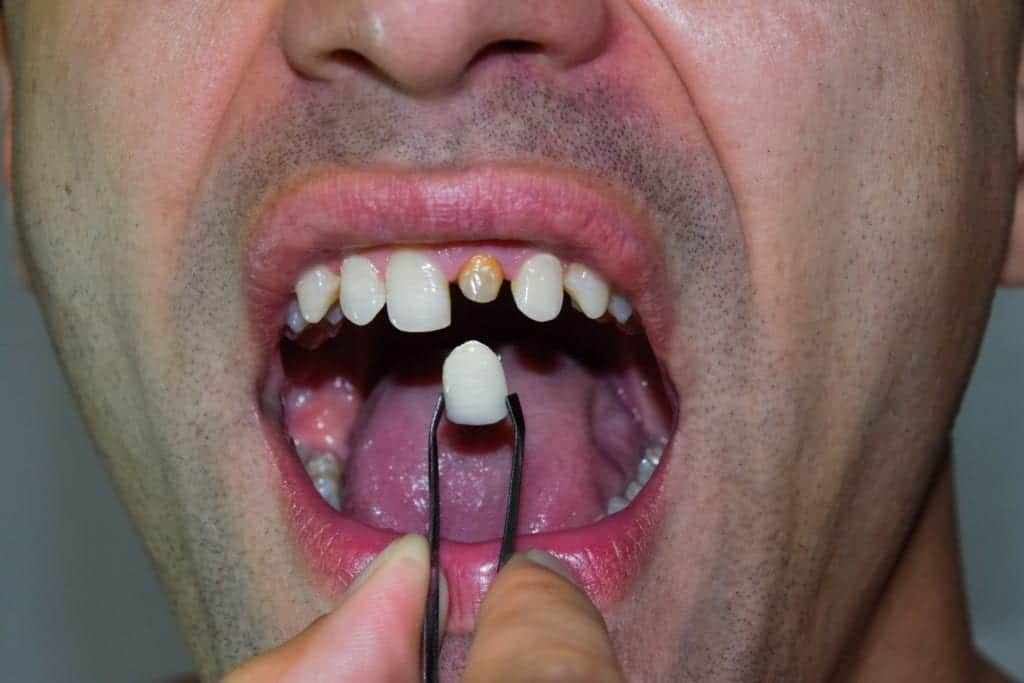
Now that we know the basics of how a dental crown is placed, we can look at ways this process can be modified for varying amounts of natural tooth structure. Since dental crowns are recommended in cases where about ¾ of the tooth is affected by damage or decay, they are designed to fit on minimal remaining tooth structure. Therefore, there needs to be something to cement the crown to and enough tooth to provide internal support.
In cases where there is not enough external tooth structure to adhere the dental crown to, your general dentist may need to build up the tooth using composite resin. Composite resin is a dental material that is applied in layers as a soft putty and then hardened one layer at a time. It is used for composite fillings, as well as for cosmetic bonding. Once enough composite resin has been applied to the remaining external tooth structure, a dental crown can be placed.
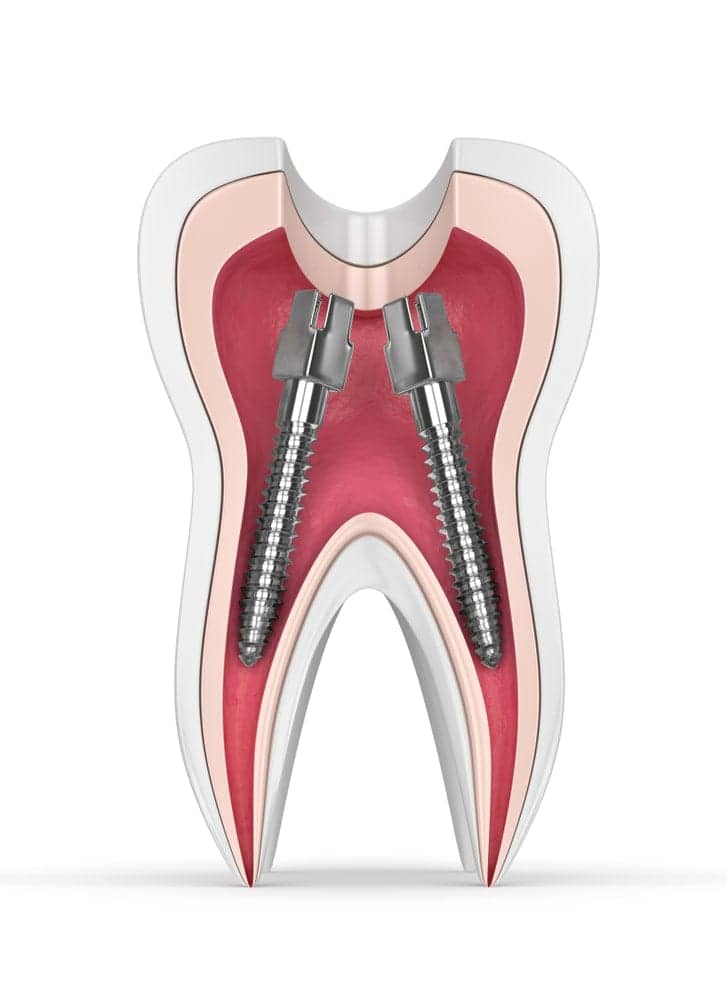
In cases where there is not enough internal support, a post-and-core foundation may be placed to strengthen the tooth. This method is used after a root canal has been performed and consists of placing one or more metal posts into the tooth after the gutta-percha has been placed. This provides enough internal support to the tooth so that a dental crown can be placed.
In cases where the tooth needs to be extracted, or is already missing, a dental crown can be placed using a dental implant. First a dental implant is placed in the empty socket and then a metal connector piece is screwed into it. This metal connector, called an abutment, has a metal post on one end that a dental crown is cemented to. This method is called an implant-supported dental crown.
As you can see, dental crowns are highly versatile in terms of how much tooth is needed for their placement. They can be placed when as much as ¾ of the natural tooth has been damaged or decayed, and can also be placed when the tooth is lacking both external and internal support. Additionally, they can also be placed in an empty socket with the use of a dental implant.

Dr. Dennis Laurich has been practicing dentistry for over 40 years. He received his DDS degree from the University of Michigan Dental School and regularly attends oral health care conventions to continue his dental education. This allows him to treat patients with the leading dental technology and methodologies. Additionally, he is a member of the American Dental Association, Michigan Dental Association, and the Detroit District Dental Society.
If you have suddenly found yourself with a severely broken tooth or an extreme toothache, you may be wondering what is going to happen to your tooth. Luckily, dentists are primarily concerned with the preservation of your natural teeth, even if they are broken or decayed. However, your dentist will need to treat the damaged or decayed part of your tooth in order to restore the tooth. In cases of severe damage or decay, dental crowns are the dental prosthetic commonly used for restoration.
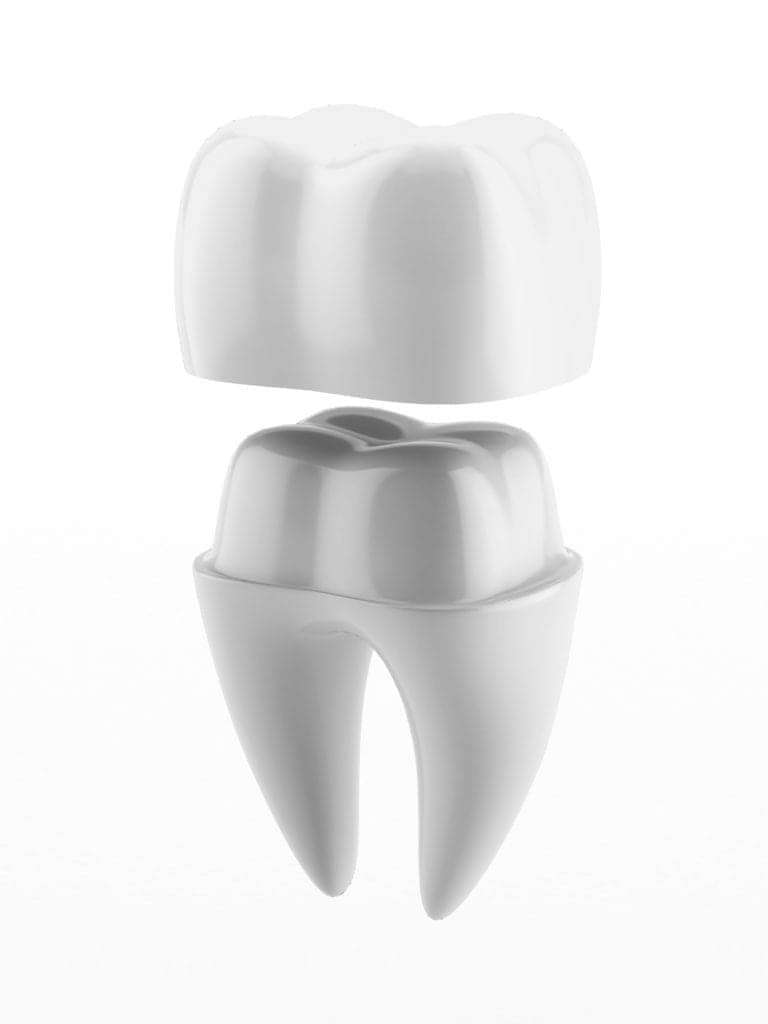
The simple definition of a dental crown is a tooth-shaped cap that fits over the top of the tooth. It is known as a dental crown because it completely covers the crown, or visible portion of the tooth. Once placed, crowns can protect the tooth from becoming damaged, as well as seal out the bacteria responsible for tooth decay.
Although damage and decay are the two most popular reasons to have a dental crown placed, there are some other reasons why your dentist may suggest a crown. In some cases, crowns can be used to treat an uneven bite by placing one or more crowns that are shaped to create a more even bite. They can also be used for cosmetic reasons. Cosmetic dental crowns can improve the color, shape, size, and spacing of teeth to yield an aesthetically-pleasing smile.
In addition to addressing multiple concerns, dental crowns can also be fabricated from a variety of dental materials. Often times, the dental material used is based on the issue that the dental crown is being placed to resolve. For example, a metal crown may be used to treat an uneven bite in a teeth grinder, while a porcelain crown may be used to improve the look of an oddly shaped tooth. Ultimately, your dentist will need to advise you on the type of dental material that will work best for your individual situation.
When having a dental crown placed, however, it is common to have a temporary stainless steel crown placed until the permanent crown has been fabricated. This is because the tooth must be prepared for the permanent crown before the impression or oral scan used for fabrication can be taken.
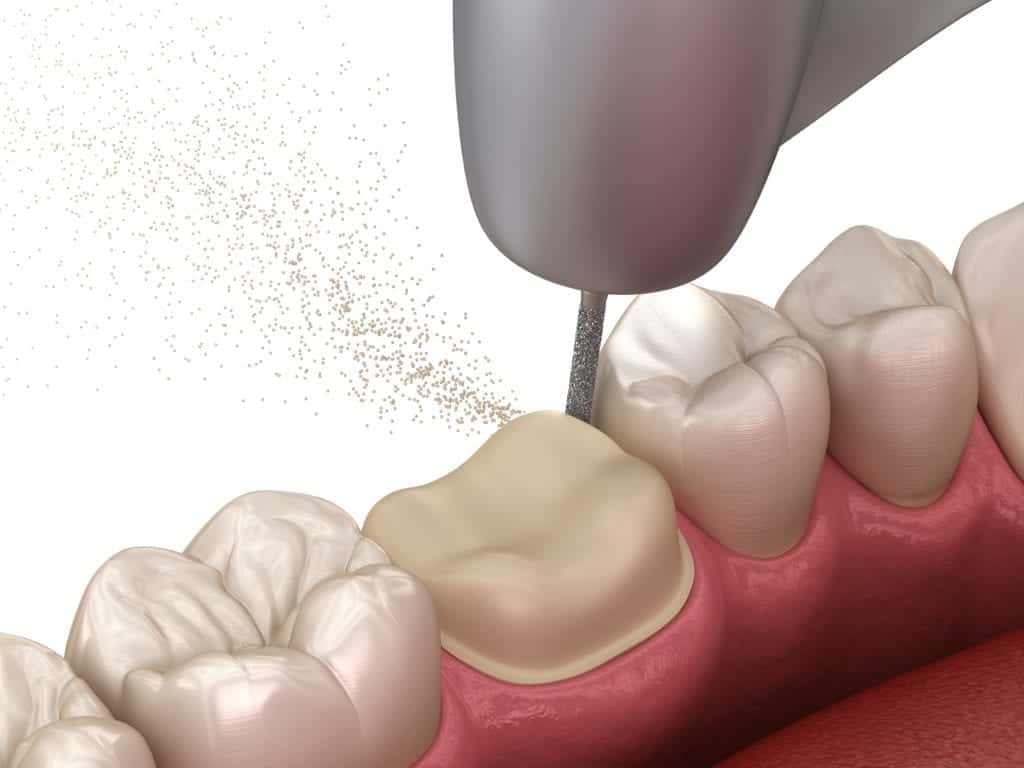
To place a dental crown, any decayed tissue will need to be removed. Depending on the extent of the decay, a root canal may need to be performed. The tooth will then be reduced in size so that a crown can fit on top without affecting the bite. In cases where the tooth is broken, the remaining tooth structure will need to be shaped and possibly built up to accomodate a dental crown. For more information, see “How Much Tooth is Needed for a Crown?”
After the tooth is prepared, a dental impression or oral scan is taken. The information obtained by the impression or scan is what the dental lab will use to fabricate the permanent crown so that it fits seamlessly over the existing tooth structure. In the meantime, the tooth is covered with a temporary crown to protect it and prevent tooth sensitivity.
Now that you know what a dental crown is, what they can be used for, some of the materials used to make dental crowns, and the placement process, you have a better understanding of what to expect if you have a tooth that is severely damaged or decayed. Most importantly, you also know that even if your tooth is damaged or decayed, this doesn’t necessarily mean you’re going to lose that tooth. After all, dentists are primarily concerned with keeping your smile both in and out of the dentist’s chair.

Dr. Dennis Laurich has been practicing dentistry for over 40 years. He received his DDS degree from the University of Michigan Dental School and regularly attends oral health care conventions to continue his dental education. This allows him to treat patients with the leading dental technology and methodologies. Additionally, he is a member of the American Dental Association, Michigan Dental Association, and the Detroit District Dental Society.
Everyone knows what an emergency room is. But, did you know that there is an emergency room for your teeth? And no, it’s not the same emergency room you would visit if you broke your arm. Rather the emergency room for your teeth is simply your local dentist’s office.
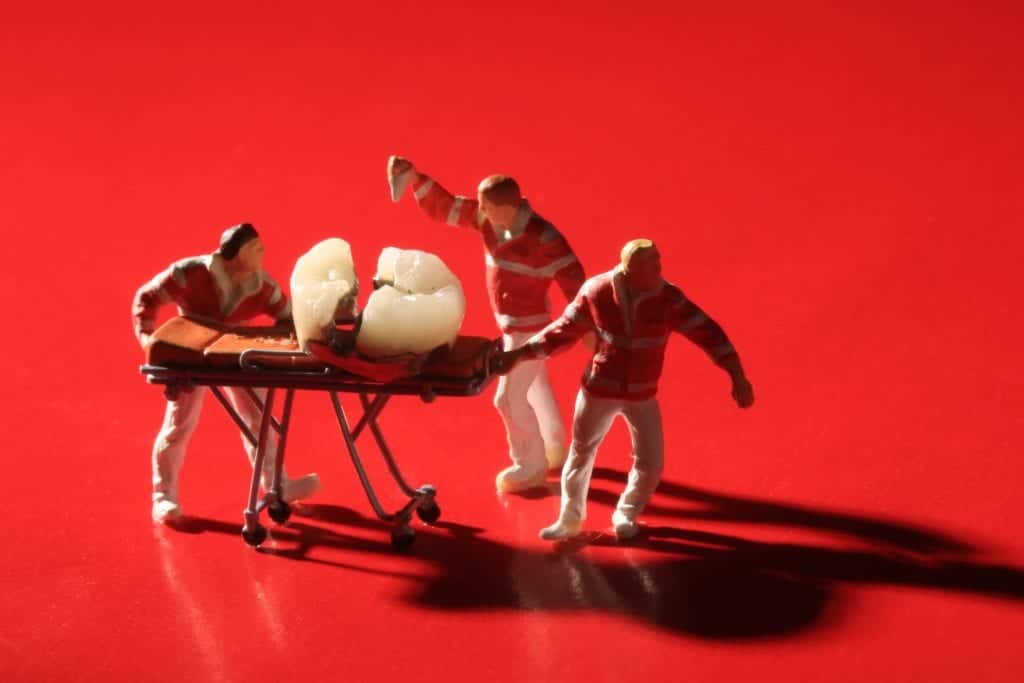
While you may think that visiting a medical emergency room is the right choice for a dental emergency, it is actually better to call your dentist. In fact, many emergency rooms end up referring dental emergencies to local dental offices for care. So if you’re having a dental emergency, how do you know whether to visit the emergency room or your dentist?
To answer that, we need to understand emergency dentistry. Emergency dentistry is the prompt and effective treatment of a condition that requires immediate treatment. Emergency dentistry is needed in cases where the condition presents a severe threat to one’s oral health. Some conditions that require emergency dentistry can include:
However, this list only represents the most common dental emergencies. There may be other conditions that also warrant emergency dental care, so if you are unsure it is important to call your dentist’s office for clarification.

Emergency dental procedures will be performed in your dentist’s office by your dentist. As part of their training, dentists are required to study emergency dentistry and are well-equipped to handle various types of dental emergencies. Their offices also contain the necessary supplies. Unfortunately, medical emergencies generally lack both dental expertise and necessary dental supplies.
When undergoing an emergency dental procedure, you may need to be sedated and will most likely be anesthetized. The level of sedation will depend upon the extent of the dental emergency and the type of treatment it requires. For example, a chipped tooth may not require any sedation if composite bonding is used, however a broken dental implant may require a minor surgery and sedation would be used.
While dental offices are well-equipped to perform emergency dentistry, there may be a few instances where a medical emergency room may be recommended. One such case is if there is significant soft tissue damage that requires stitches. Another case would be if you believe you are dealing with a broken or dislocated jaw. However, it is still recommended to call your dentist to determine whether to go to the emergency room or the dental office.
As you can see, emergency dentistry is an important part of dentistry that you may not have ever thought about. When most people think of emergencies, they think of going to a medical emergency room. However, emergency dentistry is best performed in a dental office by your local dentist.

Dr. Dennis Laurich has been practicing dentistry for over 40 years. He received his DDS degree from the University of Michigan Dental School and regularly attends oral health care conventions to continue his dental education. This allows him to treat patients with the leading dental technology and methodologies. Additionally, he is a member of the American Dental Association, Michigan Dental Association, and the Detroit District Dental Society.
Many people want to straighten their teeth and correct spacing issues with their smile. However, not as many people want to undergo orthodontic treatment with traditional metal braces. Luckily metal braces are no longer the only orthodontic option available. As you are probably aware, there is now an orthodontic method that uses clear aligners to straighten teeth and properly align the bite.
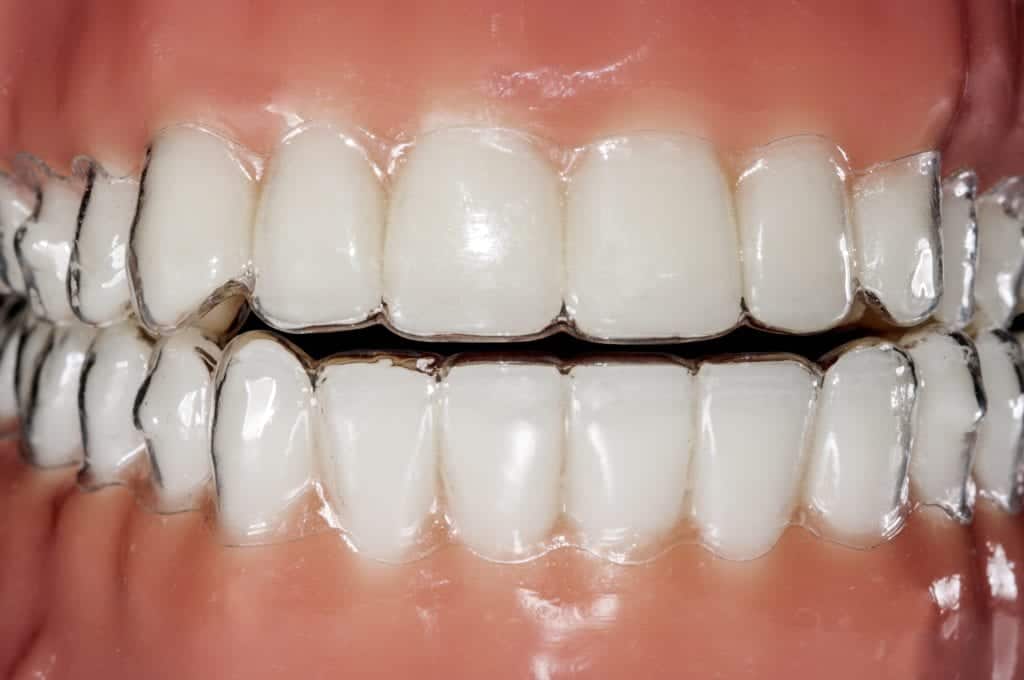
This method, named Invisalign, has become increasingly popular since its introduction in the early 2000s. Not only does Invisalign use clear aligners that are barely noticeable, but these aligners can be removed during meal times and for daily brushing and flossing. This means there are no dietary restrictions or modifications in your dental care routine.
At this point, you may be wondering how Invisalign works since it uses removable clear aligners which are very different from traditional metal braces. Yet, despite the differences in their methods, Invisalign is able to produce similar results to metal braces in most cases. Let’s take a look at why this is.
To understand how Invisalign works, we first need to understand the basic concept of how orthodontics work. In its most basic sense, orthodontic treatment uses constant gentle pressure to move the teeth. This pressure softens the bone surrounding the teeth so that they will move in the direction of the pressure. Depending on the location and extent of the pressure, the teeth may shift, rotate, move up, or move down.
Now, the different orthodontic methods all work in this way, however they use different mechanisms to accomplish this. For example, traditional metal braces use individual brackets on the teeth and an arch wire to determine the location and extent of pressure. In some cases, they can also use additional orthodontic appliances such as elastics to obtain results.
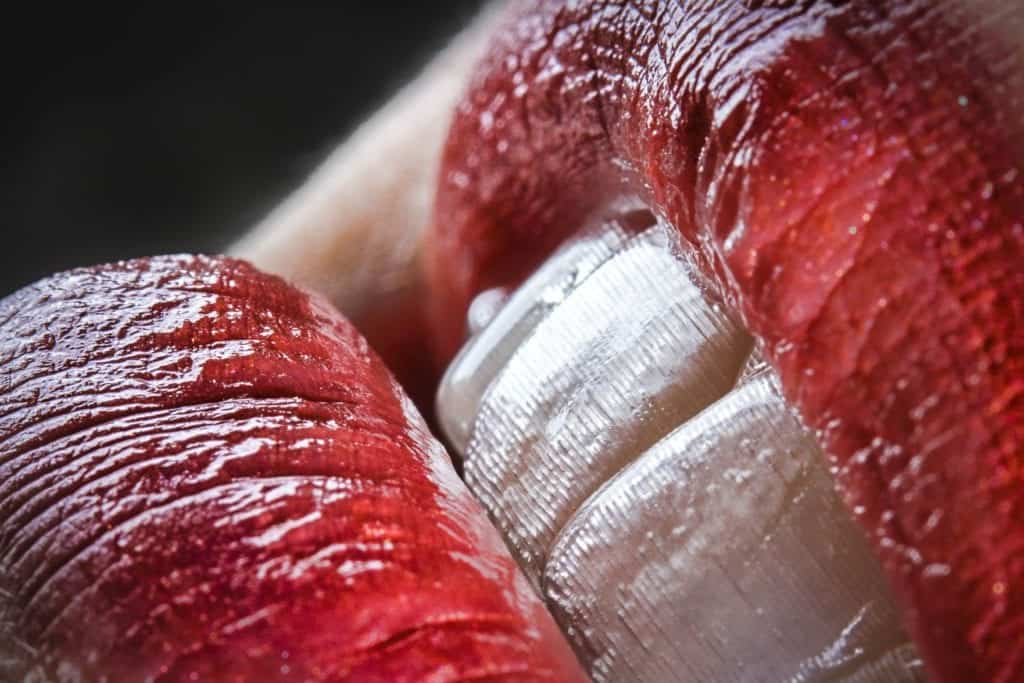
So, how does Invisalign factor into this? It certainly does not use metal brackets or an arch wire, so what does it use? The simple answer is the aligner itself. The Invisalign aligners are made using a material called SmartTrack. This material is designed to fit snugly around the many contours of your teeth so that pressure can be applied in the correct areas. The pressure exerted by the aligner will cause tiny movements.
As your teeth begin to change their position, the aligners will be switched out. This means that about every 1-2 weeks, you will wear an entirely new aligner. Each aligner is designed to accomplish a specific movement so that your smile will slowly progress over time. Your dentist will usually give you a few aligners at a time so you won’t need to visit their office every time you need a new aligner.
However, there is one important key to make Invisalign work. You have to wear the aligners for 22-24 hours a day. Any less and your treatment may not progress as planned and it can take longer to achieve the desired results. The best way to handle this is to only remove your aligners while eating, brushing, or flossing. Otherwise, they should be in your mouth.
In conclusion, Invisalign aligners use a specialized material to make aligners that are capable of exerting pressure on the teeth in order to move them over time. Even though the execution is different, Invisalign still follows the same basic orthodontic method and yields similar results as metal braces. However, it does so in a much more aesthetic and hassle-free manner.

Dr. Dennis Laurich has been practicing dentistry for over 40 years. He received his DDS degree from the University of Michigan Dental School and regularly attends oral health care conventions to continue his dental education. This allows him to treat patients with the leading dental technology and methodologies. Additionally, he is a member of the American Dental Association, Michigan Dental Association, and the Detroit District Dental Society.
Did you know that your teeth can affect the way you sleep? Specifically, what your teeth do at night when you are sleeping. Bruxism is the term used to describe the involuntary grinding or clenching together of the teeth while asleep. Currently, the National Sleep Foundation estimates that about 8% of American adults are affected by bruxism.
In addition to being detrimental to the quality of your sleep, bruxism can also cause headaches, ear aches, sore facial muscles, jaw pain, damaged teeth, and temporomandibular joint disorder (TMD). For these reasons, those who grind or clench their teeth are encouraged by their dentist to stop. However since bruxism is often involuntary, stopping is easier said than done. Luckily, your dentist has a few strategies to help you stop grinding or clenching your teeth.
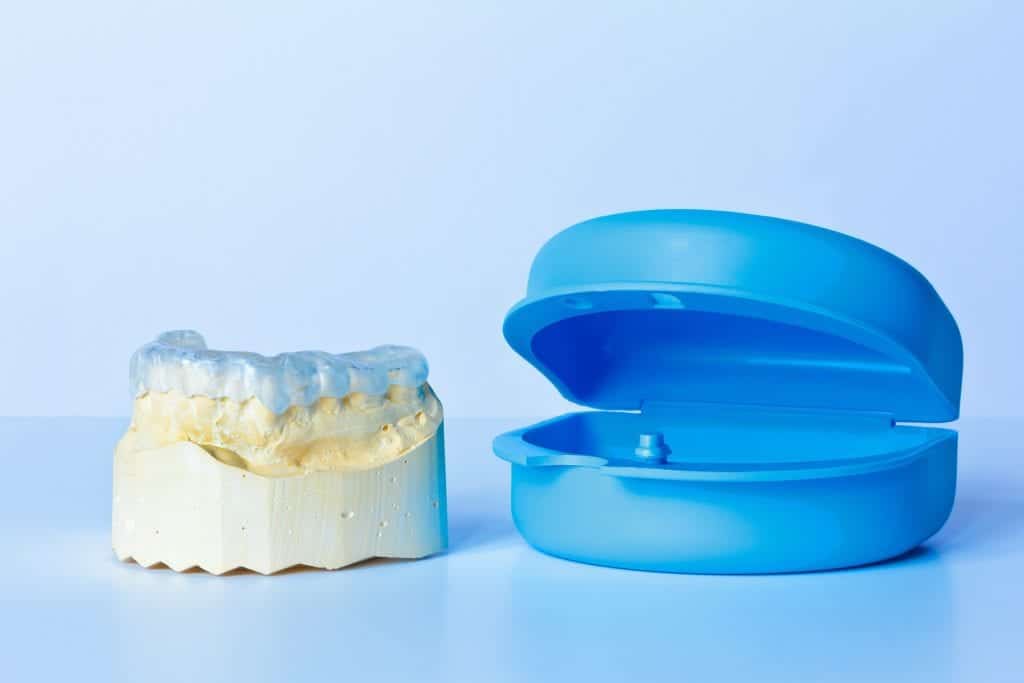
This is by far the most popular dental treatment for bruxism. Night guards are acrylic casts that fit over a single arch of teeth. Some dentists place them on the upper arch, while others may place them on the lower arch. Night guards work to prevent the mouth from closing tight, and therefore decrease the force of teeth grinding and clenching, as well as protects the teeth from damage. This position also reduces the strain on the jaw joint so that the jaw muscle can rest. Like their name suggests, they are only worn at night and are removable.
If your dentist recommends a bruxism night guard, they will need to take a dental impression of your mouth. During a dental impression, the impression putty will gradually harden around your teeth to form a mold of either the upper or lower arch. This mold will then be used by a dental lab to fabricate a night guard that will fit perfectly over your teeth.
While many companies offer “do it yourself” night guards that consist of using the boil and bite method, these night guards unfortunately do not offer the same fit. This can make them uncomfortable to wear, can decrease their effectiveness, and can even cause symptoms to worsen. Therefore, it is recommended that you use a customized night guard fabricated by a dental lab to stop bruxism.
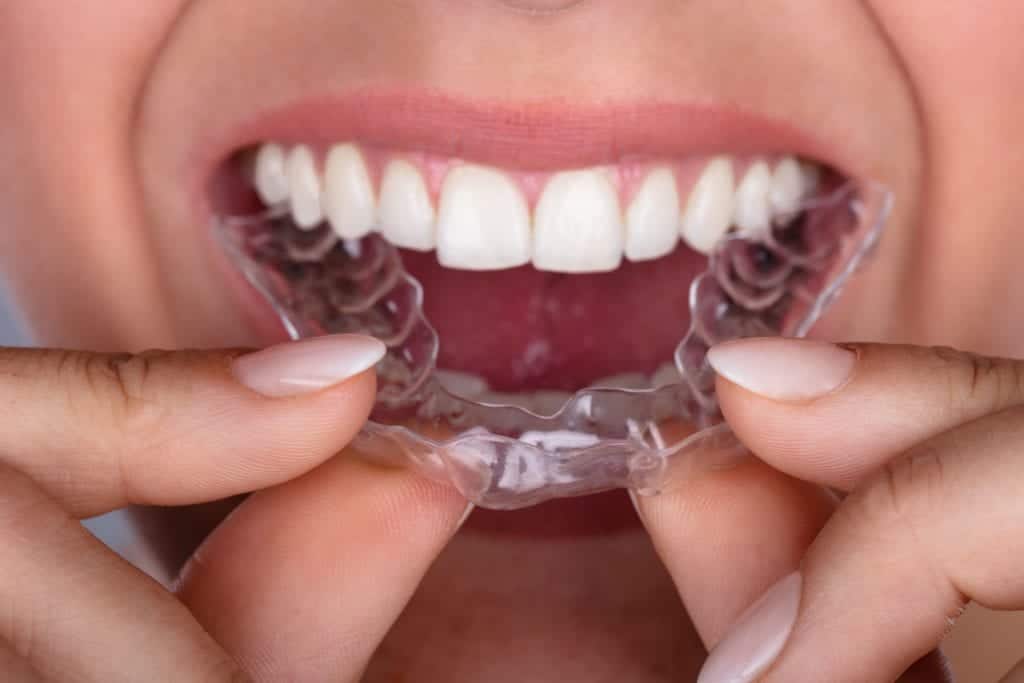
Some cases of bruxism can be caused or exaggerated by teeth that are crooked, misaligned, or overcrowded. In these cases, your dentist will likely recommend orthodontic treatment to correct the bite alignment and move your teeth into a better position. Invisalign is a popular orthodontic treatment that uses clear aligners to gradually move your teeth and align your bite. These aligners can be removed for meals, but must be worn a minimum of 20-22 hours a day to be effective.
Although the exact cause of bruxism is not known, stress has been identified as a major contributing factor. Therefore, in addition to prescribing a night guard, your dentist will also encourage you to identify possible stressors in your life. They may also suggest that you visit a therapist or counselor to learn how to better manage or decrease your stress levels before bedtime. Learning how to manage or decrease daytime stress decreases the emotional tension that inevitably leads to physical tension.
If you want to stop bruxism, these are three strategies your dentist may recommend. In most cases, your dentist will start by suggesting a night guard and stress management. Some other cases, may require orthodontic or other treatment to address a specific cause. Ultimately, the best way to stop bruxism is to visit your local dentist office.

Dr. Dennis Laurich has been practicing dentistry for over 40 years. He received his DDS degree from the University of Michigan Dental School and regularly attends oral health care conventions to continue his dental education. This allows him to treat patients with the leading dental technology and methodologies. Additionally, he is a member of the American Dental Association, Michigan Dental Association, and the Detroit District Dental Society.
Off the top of your head, do you know how many teeth you have? Did you just attempt to count your teeth using your tongue? As much as we use our teeth on a daily basis for things like chewing and speaking, many people don’t know too much about them. Although there are many interesting things to know about teeth, let’s start at the beginning by answering the question, “how many teeth does a human have?”
The short answer is that humans have 20 primary teeth and 32 secondary (permanent) teeth during their lifetime. While the short answer may earn you some trivia points, it does little to teach you about what your teeth actually do and why they are so important. For that, you need the longer answer.
With the longer answer, let’s take things one step further by breaking down these 32 permanent teeth. The 32 teeth inside your mouth are comprised of:
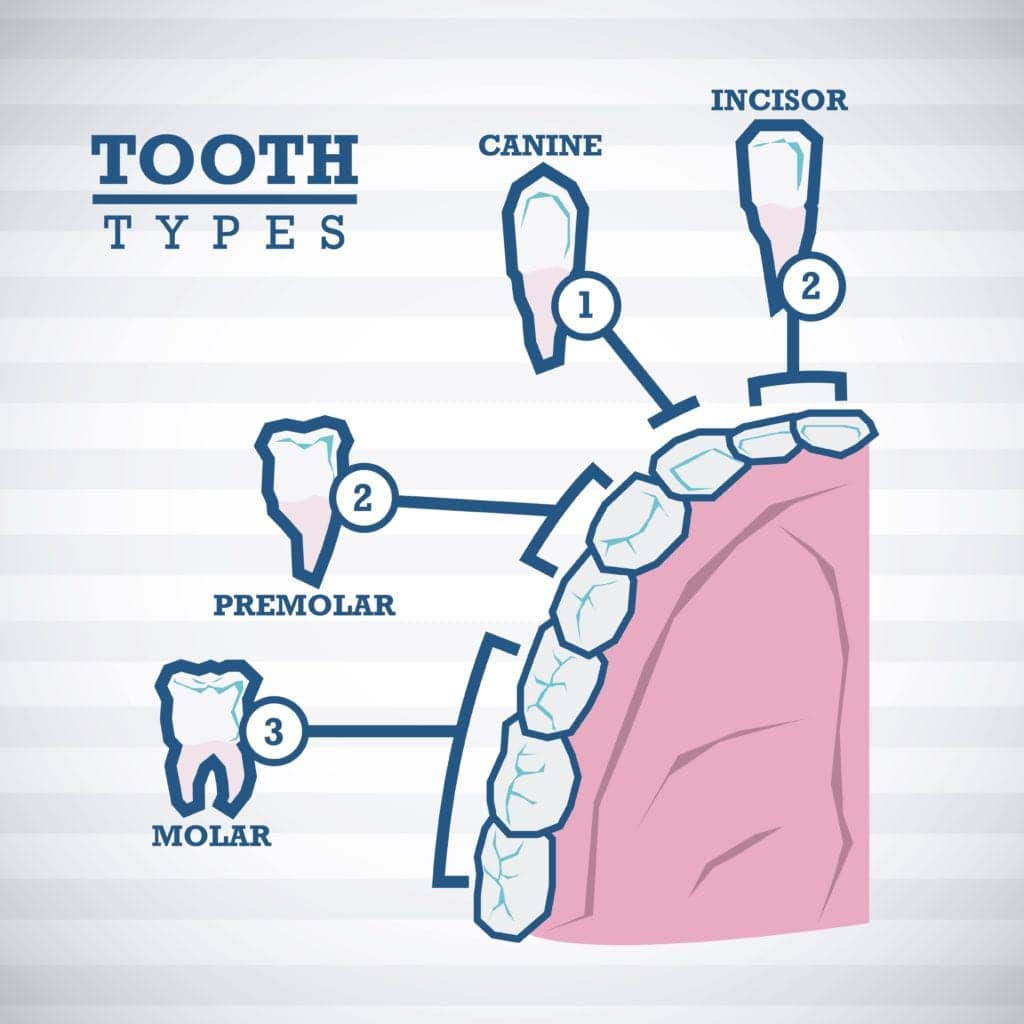
The incisors are the teeth in the center of your smile, with four on the top arch and four on the bottom arch. Incisors are the first baby teeth to erupt and fall out, as well as the first permanent teeth to erupt. Primary incisors erupt around the age of 6 months and fall out around age 6 to make room for the secondary incisors to erupt. They have a flat, wide appearance and function in the same way a chisel would. Their sharp edges are used for biting food into smaller pieces.
Working away from the center of your smile, the cuspids come next. There are two cuspids on the top arch and two cuspids on the bottom arch. Primary cuspids generally erupt between the age of 16-20 months, starting with the upper arch. However, secondary cuspids begin to erupt around the age of 9, but start with the lower arch. The cuspids are also known as canine teeth because of their pointy appearance. This pointy, sharp edge allows the cuspids to tear up food.
Next comes the bicuspids, or premolars. There are eight bicuspids, four bicuspids on the top arch and four on the bottom arch. Bigger than the incisors and canines, but smaller than the molars, the bicuspids have a flatter top surface with various ridges used to grind food into smaller pieces. Bicuspids do not erupt in humans until the age of 10, meaning there is only one set of bicuspids that are permanent teeth.
Molars are the large teeth located in the back of your mouth. Humans have six upper molars and six lower molars, totalling twelve molars! The first set of molars generally erupts around age six, the second set erupts around age 12, and the third set erupts around age 17-25. Out of all your teeth, your molars are the strongest and are used to grind up food so that it can be safely swallowed.
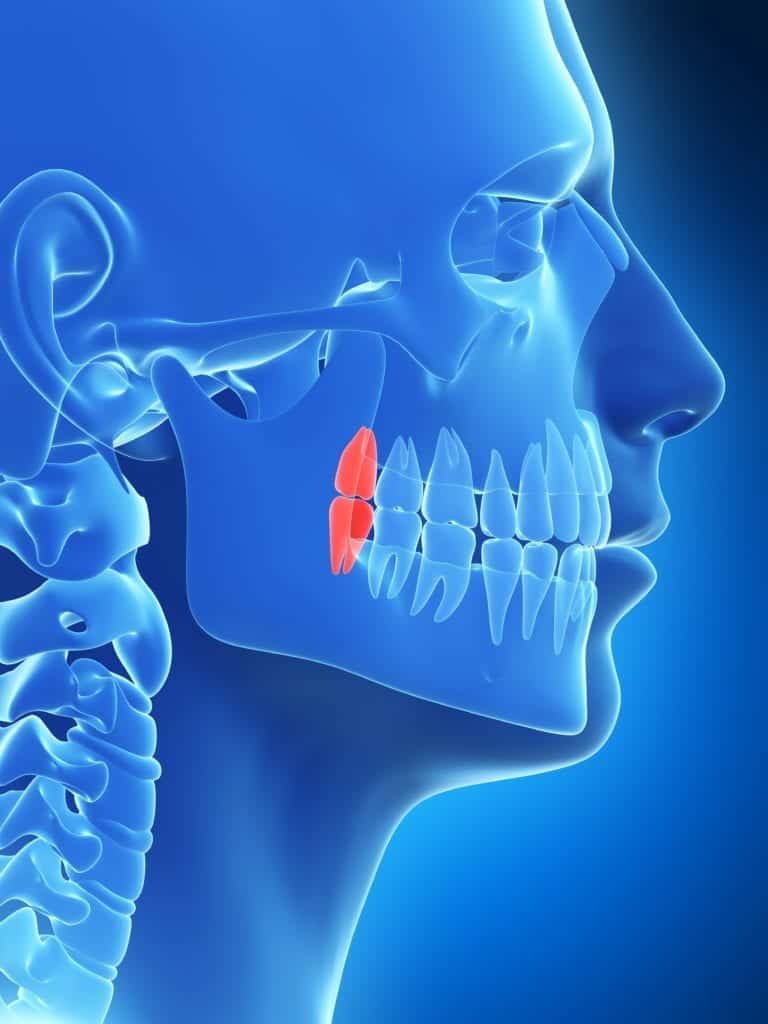
Your third molars are more commonly known as your wisdom teeth. Unfortunately, these teeth usually need to be extracted because they do not fit properly in the mouth. Wisdom teeth are a functionless organ leftover from our evolutionary past. Thousands of years ago, humans had larger skulls and tougher diets that required additional chewing power. Nowadays, eating has become easier and our skulls have become smaller than our ancestors. This means that the third molars have problems erupting entirely and can cause problems like pain, swelling, and infection.

Dr. Dennis Laurich has been practicing dentistry for over 40 years. He received his DDS degree from the University of Michigan Dental School and regularly attends oral health care conventions to continue his dental education. This allows him to treat patients with the leading dental technology and methodologies. Additionally, he is a member of the American Dental Association, Michigan Dental Association, and the Detroit District Dental Society.
If you have a tooth that is severely decayed or damaged and is in need of extraction, or you have gaps in your mouth from missing teeth, your dentist is likely to recommend dental implants. Dental implants are a popular restoration method for replacing missing teeth. To understand how dental implants work, you first need to understand their basic structure.

Dental implants are composed of three main parts: the dental prosthetic, a connector piece (abutment), and the implant screw. The implant screw is what sets dental implants apart from other restoration methods. Made of titanium, a biocompatible material, dental implant screws are embedded into the jawbone to act as artificial tooth roots.
Therefore, dental implants work by replicating natural tooth roots. They anchor the dental prosthetic securely and allow for an almost complete restoration of function because of their strength. This also prevents the dental prosthetic from shifting while speaking or eating, as well as decreases the risk of the restoration falling out.
Additionally, dental implants also provide the same type of stimulation to the jawbone as natural tooth roots. In order to maintain adequate bone mass, the jawbone must be stimulated by the force of chewing. Without this stimulation, the body will begin to absorb the bone mass in a process known as resorption. Since dental implant screws sit inside the jawbone, they provide the same stimulation as tooth roots and ensure the jawbone maintains its bone mass.
Now that you understand how the structure of dental implants affects the way they work, let’s take a look at how dental implants work for different cases. For starters, dental implants can be used to restore a single tooth, multiple teeth, or an entire mouthful of teeth. How is this possible? It all depends on the type of dental prosthetic used in coordination with the implant screw.
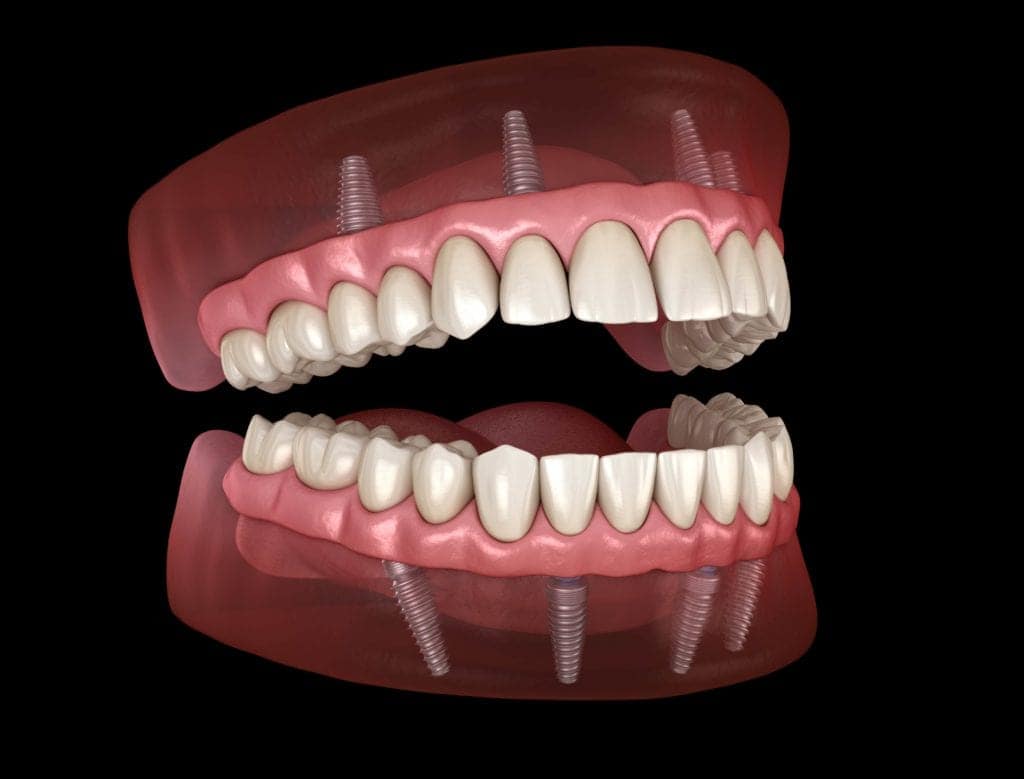
Dental implant screws can support three types of dental prosthesis: crowns, bridges, and dentures. In cases where a single tooth is missing, a dental crown is placed atop a dental implant screw. When multiple adjacent teeth are missing, a dental bridge can be used. This is known as an implant-supported bridge and is composed of one or more fake teeth with an implant-supported crown on either side. Finally, an implant-supported denture is used when an entire arch of teeth need to be restored.
Implant-supported dentures are sometimes referred to as “all-on-four” implants because most dentures are supported by four dental implants. However, there may be some cases that require more than four implants for proper stabilization. Implant-supported dentures can replace a single arch or both arches. When both arches are replaced, it is known as a full mouth reconstruction, rehabilitation, or smile makeover. For a full mouth rehabilitation, about eight dental implants are needed; four in the top arch and four in the bottom arch.
Overall, dental implants work because their structure closely resembles natural tooth roots. This allows them to provide the same type of strength and stimulation as natural tooth roots in order to restore function and preserve the jawbone. Additionally, dental implants can work for a variety of dental cases and can be used to replace a single tooth, multiple teeth, or an entire mouth full of teeth.
With the coming of a new year comes clean slate full of opportunities. Because of this, many people are inspired to make new year’s resolutions that they hope to implement in the new year. This year as you are thinking about what you’d like to achieve, why not consider your oral health?
Many people resolve to lose weight and eat healthy, which are two ways to improve their physical health. While these are two of the most popular resolutions, most people don’t take into account the way their oral health affects their overall health. Although diet and exercise are certainly beneficial, improving or maintaining your oral health is also highly important.
With that being said, here are the top New Year’s resolutions for your oral health:
In order to maintain your oral health, the American Dental Association recommends visiting your local dental office at least once every six months for a dental checkup and teeth cleaning. These semi-annual dental checkups allow your dentist to evaluate your teeth, gums, and jaw for any signs of possible dental issues. Dental issues corrected early generally require less invasive treatments that are much cheaper.
Additionally, having your teeth professionally cleaned every six months removes excess plaque and tartar. Both plaque and tartar can house thousands of bacteria responsible for common dental problems like tooth decay and gum disease. Having your teeth cleaned regularly reduces the amount of bacteria in your mouth and decreases the risk of developing serious dental issues.
This is one of those resolutions that sounds simple at first, however many people don’t adhere to this recommended oral hygiene practice. A study completed from 2009-2012 by Duong T. Nguyen, a medical epidemiologist, found that only 30% of Americans floss their teeth daily, while 37% floss less than daily and 32% does not floss at all.
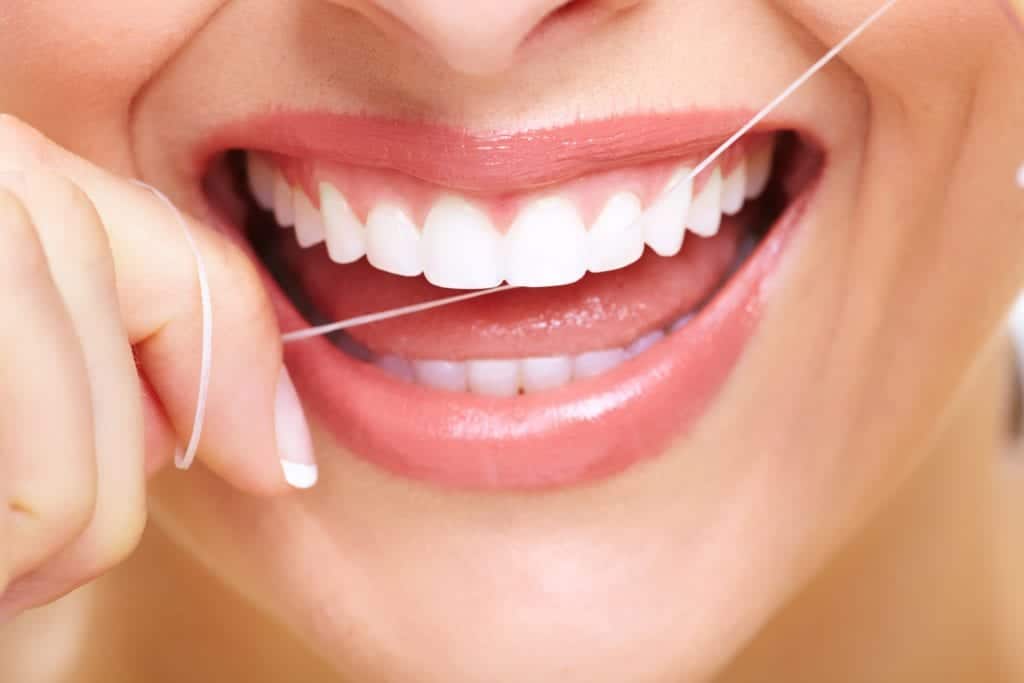
Additionally, there has also been some debate as to how many people actually brush their teeth twice a day. Various studies have provided data that shows some people do brush twice a day, while others only once a day, and even others who do not brush daily altogether. Since both brushing and flossing are important to your oral health, resolving to adhere to a daily routine of brushing twice and flossing once will help you to preserve your oral health.
Not only is a daily dental routine important for your oral health, but the supplies you use for this routine are also important. Just as certain activities require certain tools for a successful outcome, your oral health also requires certain tools. For starters, all of your dental products should be approved by the American Dental Association. To determine this, check for their seal.
Here are a few guidelines on how to select your dental supplies for the new year. Your toothbrush should be long enough to reach the back of your mouth and should have soft bristles. It should also be changed out every three months or after you have been sick to prevent spreading excess bacteria. Your toothpaste should be fluoridated because fluoride helps to strengthen the enamel. Finally, there are different types of floss to choose from, so you will want to find the type that works best for your dental needs.
These three resolutions are the top New Year’s resolutions for your oral health. Resolving to visit your local dentist every six months, brush twice and floss once daily, and select the right dental supplies will help you to preserve your oral health and a beautiful smile all through the new year and the new decade.
If you have a missing tooth or multiple missing teeth, you may struggle with day to day activities such as eating and speaking. Missing teeth can also negatively affect your appearance and may even cause you to feel self-conscious about your smile. No matter what the reason for tooth loss, missing teeth should be replaced to restore both function and appearance.
Additionally, replacing missing teeth is also recommended by dentists to maintain your oral health. Replacing missing teeth prevents your remaining teeth from shifting to fill the gap, which can cause the bite to become misaligned. A misaligned bite can further complicate things by placing additional strain on the jaw joint. Thus, replacing missing teeth preserves the structural integrity of your smile.
This is why general dentists provide different dental restorations for replacing missing teeth. One commonly used restoration is called a dental bridge. There are four different types of dental bridges:
The traditional dental bridge is the most commonly used type of bridge. Traditional dental bridges are composed of a fake tooth surrounded on either side by a dental crown. The dental crowns support the bridge, while the fake tooth bridges the gap left by a missing tooth. To place a traditional dental bridge, there must be healthy teeth on either side of the gap. Both of these teeth will need to be modified to have dental crowns placed in order to support the bridge.
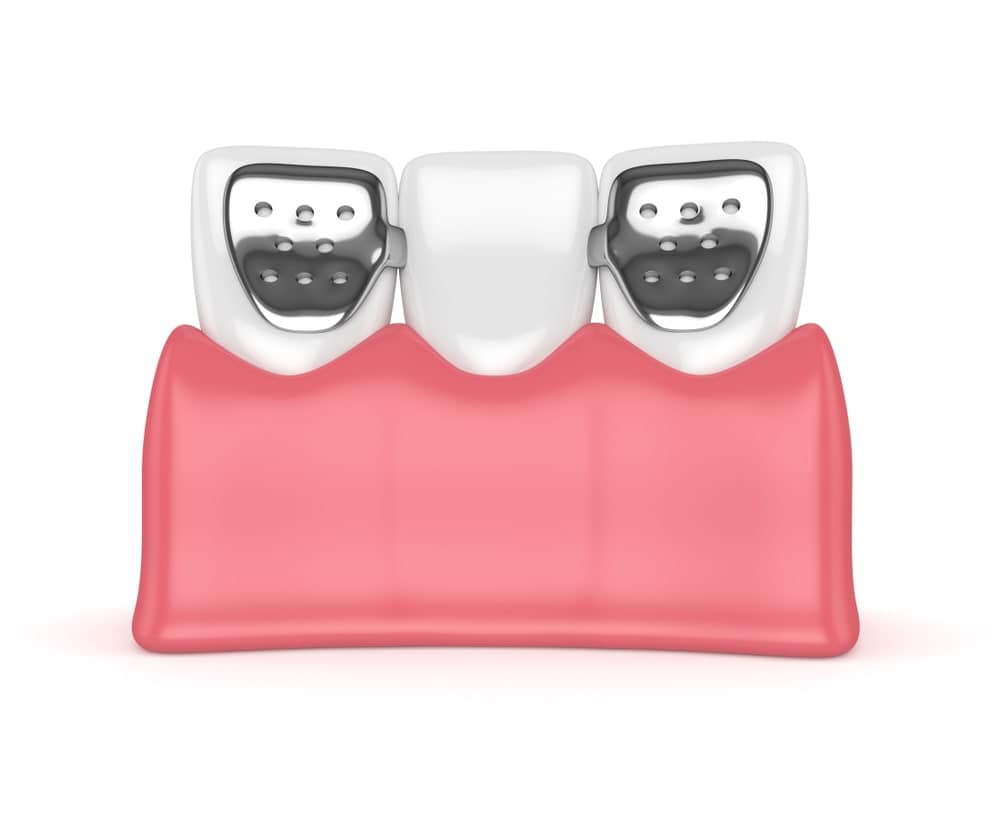
A Maryland Bonded Bridge uses a metal framework to support itself. With this type of bridge, dental crowns are not required. Instead a metal framework is wrapped around or adhered to the natural teeth on either side of the fake tooth. Since they do not require dental crowns, Maryland bridges are ideal for patient’s who do not want their natural teeth altered.
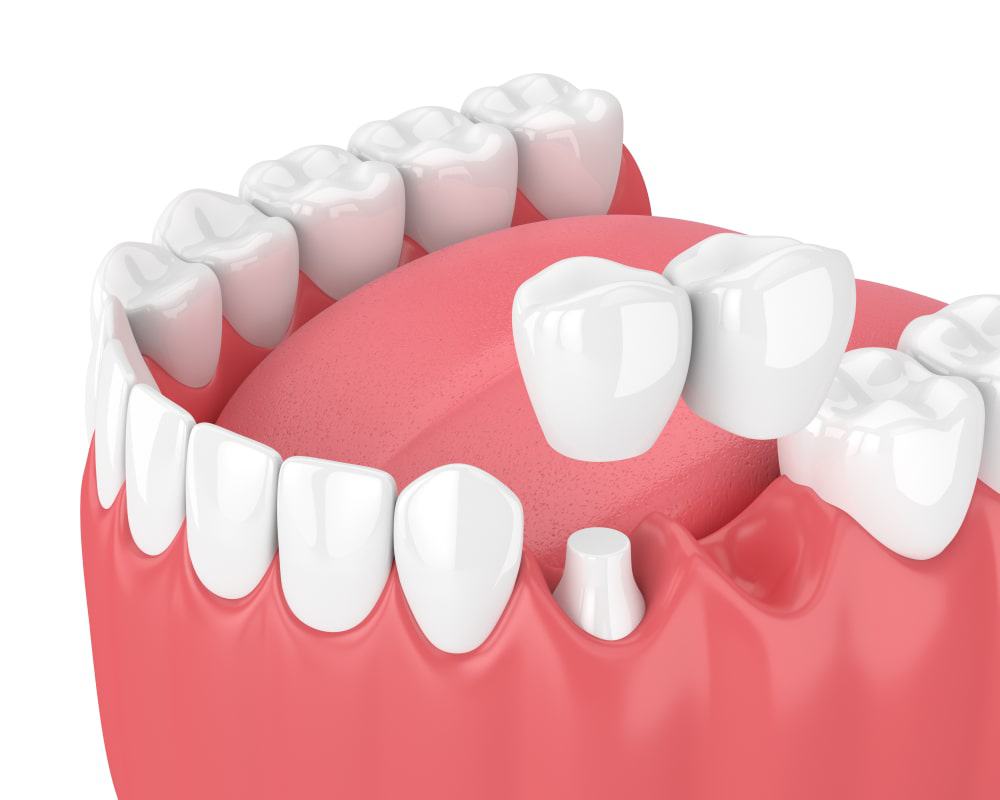
A Cantilever bridge is slightly different in structure than the other types of dental bridges. This is because this type of bridge uses a single natural tooth to support a fake tooth. Cantilever bridges are often easier to place and more affordable than the other types of dental bridges because they only require a dental crown to be placed on a single tooth. However, this also means that this bridge lacks the same strength as the other types. For this reason, they can also be used towards the front of the mouth.
Like their name suggests, this type of dental bridge is supported by dental implants. Dental implants are artificial tooth roots that are used to replace missing teeth. An implant-supported bridge can be used when there are multiple missing adjacent teeth or when the teeth surrounding the gap are not able to support dental crowns. However, to place an implant-supported bridge, there must be an adequate amount of bone mass. Therefore, this type of bridge may not be ideal for everyone.
These four different types of dental bridges offer patients with missing teeth a variety of restoration options. While they all utilize a similar structure to restore missing teeth, each type offers different ways of supporting a dental bridge. These options allow dental bridges to be used for a variety of patients with different dental needs. In the end, your general dentist will examine your case and provide advice on which type of dental bridge is best suited for your needs.

Dr. Dennis Laurich has been practicing dentistry for over 40 years. He received his DDS degree from the University of Michigan Dental School and regularly attends oral health care conventions to continue his dental education. This allows him to treat patients with the leading dental technology and methodologies. Additionally, he is a member of the American Dental Association, Michigan Dental Association, and the Detroit District Dental Society.